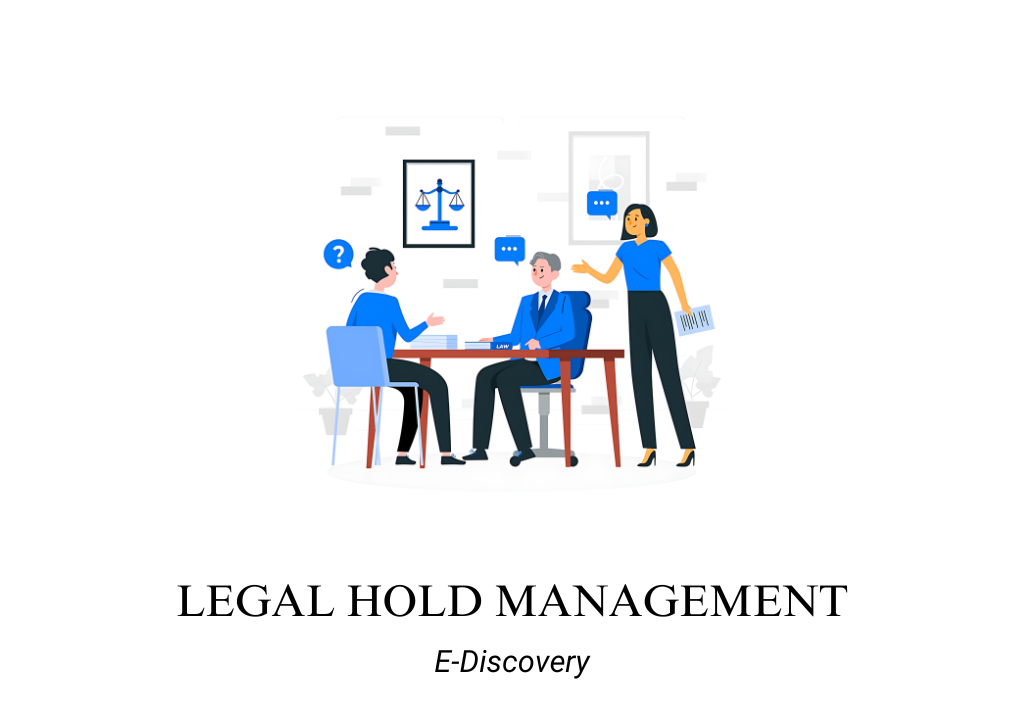Introduction
Legal hold management is a crucial functionality in e-discovery tools that involves implementing, tracking, and enforcing legal holds on electronically stored information (ESI) that may be relevant to ongoing or anticipated litigation, investigations, or audits. This functionality ensures that relevant data is preserved and not altered, deleted, or destroyed, which is essential for maintaining the integrity of evidence. Legal hold management encompasses the entire process from issuing legal hold notices to tracking compliance and managing data custodians.
Purpose
The purpose of legal hold management is to ensure the preservation of all potentially relevant data in a manner that complies with legal and regulatory requirements. By effectively managing legal holds, organizations can mitigate the risk of spoliation (destruction or alteration of evidence), avoid legal penalties, and ensure that all relevant information is available for review during legal proceedings. Legal hold management is a foundational aspect of the e-discovery process, ensuring that the integrity and availability of evidence are maintained from the onset of a legal matter.
Benefits
- Preservation of Evidence: Ensures that all relevant data is preserved, reducing the risk of spoliation and legal penalties.
- Compliance Management: Helps organizations comply with legal obligations by systematically tracking and enforcing legal holds.
- Efficient Communication: Streamlines the process of issuing, managing, and tracking legal hold notices to relevant custodians.
- Risk Mitigation: Reduces the risk of data loss or alteration, which could compromise the outcome of legal proceedings.
- Centralized Management: Provides a centralized platform for managing all aspects of legal holds, improving oversight and control.
CHECK MORE: Guide to find best E-Discovery tools for lawyers
Features
Legal Hold Tracking
Meaning:
Legal hold tracking is a feature that allows organizations to monitor and manage the status of legal holds across all relevant data and custodians. This includes tracking which custodians have been issued legal holds, the status of their compliance, and any actions taken regarding the preservation of data.
Purpose:
The purpose of legal hold tracking is to provide a comprehensive overview of all active legal holds, ensuring that organizations can monitor compliance and address any issues promptly. This feature is essential for maintaining control over the legal hold process and ensuring that all relevant data is preserved.
Use Cases:
- Compliance Monitoring: A legal team uses legal hold tracking to monitor the status of holds across multiple custodians, ensuring that all required data is being preserved.
- Audit Preparation: An organization uses legal hold tracking to prepare for an audit, demonstrating that all relevant legal holds have been issued and are being enforced
Legal Hold Notice Management
Meaning:
Legal hold notice management is a feature that facilitates the creation, distribution, and management of legal hold notices to relevant data custodians. This includes customizing notice templates, automating the distribution process, and managing responses from custodians.
Purpose:
The purpose of legal hold notice management is to ensure that all relevant data custodians are promptly informed of their obligation to preserve data. By managing the distribution and tracking of legal hold notices, this feature helps organizations ensure that no custodian is overlooked and that all relevant data is preserved.
Use Cases:
- Automated Notice Distribution: A legal department uses legal hold notice management to automatically distribute hold notices to custodians across various departments, ensuring timely and consistent communication.
- Template Customization: A law firm customizes legal hold notice templates to include specific instructions and legal requirements relevant to a particular case, ensuring clear communication with custodians.
Receipt Acknowledgement
Meaning:
Receipt acknowledgement is a feature that tracks and confirms that data custodians have received and acknowledged their legal hold notices. This typically involves requiring custodians to confirm receipt through an automated system, providing proof of compliance.
Purpose:
The purpose of receipt acknowledgement is to ensure that all custodians are aware of their legal hold obligations and to provide documented proof that they have been informed. This feature is critical for demonstrating compliance with legal hold requirements and for reducing the risk of data spoliation.
Use Cases:
- Proof of Compliance: An organization uses receipt acknowledgement to ensure that all custodians have received and acknowledged their legal hold notices, providing a clear audit trail for legal proceedings.
- Custodian Accountability: A legal team monitors receipt acknowledgements to verify that all custodians are aware of their responsibilities, following up with those who have not acknowledged receipt.
Data Custodian Management
Meaning:
Data custodian management is a feature that allows organizations to manage and track all data custodians involved in a legal hold. This includes identifying relevant custodians, assigning legal hold responsibilities, and monitoring their compliance with legal hold requirements.
Purpose:
The purpose of data custodian management is to ensure that all individuals who control or have access to relevant data are properly managed and held accountable for preserving that data. This feature helps organizations maintain a comprehensive overview of all custodians, ensuring that no relevant data is overlooked.
Use Cases:
- Custodian Identification: A legal team uses data custodian management to identify and assign legal hold responsibilities to all employees who have access to relevant data, ensuring comprehensive data preservation.
- Compliance Tracking: An organization monitors custodian compliance with legal hold requirements, using data custodian management to follow up with individuals who have not completed required actions.
Conclusion
These features within the legal hold management functionality are crucial for ensuring that organizations can effectively preserve relevant data in compliance with legal and regulatory requirements. By leveraging these features, legal teams can manage the entire legal hold process efficiently, from issuing notices to tracking compliance and managing custodians, thereby reducing risks and ensuring the integrity of evidence.
CHECK OUT E-DISCOVERY TOOLS ON DIRECTORY OR CLICK HERE


